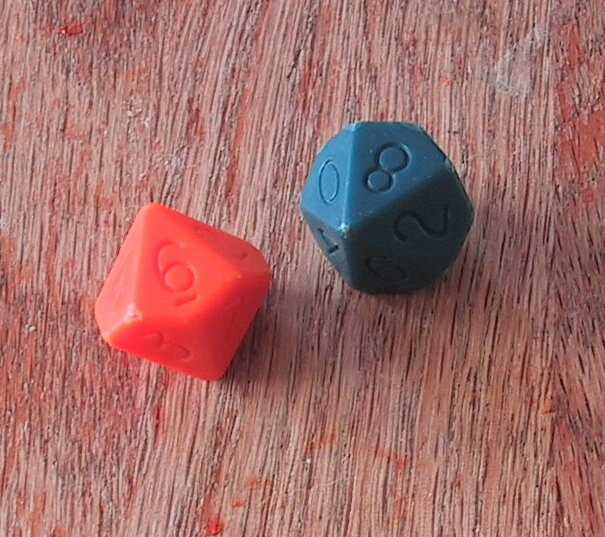Atavisms & Afflictions

AD&D arguably had better rules for magically causing and curing diseases than any edition since.
A few weeks ago, I had a few words to say about how the Contagion spell works in the new edition of Dungeons & Dragons. After writing it, I realized that I didn't know very much about how the spell had worked prior to third edition, the version that I know best, so while I could comment on how the spell had evolved in recent years, I actually knew very little about how it's evolved since the earliest days of modern role-playing. Compared to some of the people I game with, I'm a relative neophyte to gaming -- I started playing second edition D&D, Vampire: the Masquerade and the old Marvel Super Heroes RPG over the course of the early 90's -- and I've never actually played first edition D&D or AD&D. Just recently, one of my favourite gaming shops put the WotC "premium" reprints of the original AD&D core rulebooks on sale for a couple of dollars each, so I picked up the trilogy for my library. Until such time as I get around to finding reprints of the very first edition D&D rulebooks at a sensible price, this is the earliest incarnation of the rules that I'll have convenient access to. Imagine my surprise to learn that the rules back then were a good deal more subtle and elegant than what we've had since.
In 1st edition AD&D, there was no Contagion spell, but since many spells were "reversible," clerics and druids, but not arcane casters, could cast Cause Disease. Within 1-6 turns of being affected by this spell, the victim would begin to lose 1 hit point per turn and one point of strength per hour until reduced to 10% of their total. Consider that for a moment, because 10% of a strength of 20 is 2, meaning that this spell would reduce literally the strongest men to the point of being too feeble to raise their swords. This was a third-level spell, and the only reason that it wasn't completely over-powered was that it might take a full day to finish weakening a target and so had very limited combat utility.
I call this more elegant than what we've had since because it's a perfectly simple and accurate reflection of real-world disease. Whereas third edition D&D wasted a great deal of time and energy making up nonsensical illnesses to go with Contagion, AD&D basically said that everybody who gets afflicted with Cause Disease gets the flu and is reduced to a quivering wreck for a few days. It was simple, it was straightforward, and it was an experience that a lot of players have lived through in real life. What this obviously lacked, however, was the flexibility of more recent incarnations of the spell, which have allowed the caster to target any of the target's ability scores rather than restrict them to dealing only strength and hit point damage.
While we're on this topic, I'd be remiss if I didn't put in a word of praise for AD&D's Cure Disease spell too. Cure Disease addressed what I consider to be the biggest problem with more recent versions of this spell, which is the fact that they don't define what a "disease" actually is... a question which continues to trouble medical science to this day. In AD&D, Cure Disease specifically states that the spell can cure "most diseases," and specifies that it primarily means "those of a parasitic, bacterial, or viral nature." Given that this text was written in 1978, I can forgive them for not including diseases that are caused by, for example, prion proteins. What's significant here is what they exclude. The third edition Remove Disease states that it "cures all diseases" while the new fifth edition Lesser Restoration removes "one disease." Can these spells reverse the effects of a heart attack? Cure dementia? Repair an inborn genetic disorder? The rules no longer specify, even though they addressed this problem back in the 70's. Every incarnation of these spells since has, in that sense, felt like a bit of a step back, even though all it really represents is an effort to simply the rules for the benefit of players who don't know which illnesses are bacterial and which are the result of fat build-up in their arteries.
More than four years ago, Dr. Eris Lis, M.D., began writing a series of brilliant and informative posts on RPGs through the eyes of a medical professional, and this is the one that appeared here on October 4, 2014. Lis is a physician, gamer, and author of the Skirmisher Publishing LLC OGL sourcebook Insults & Injuries, which is also available for the Pathfinder RPG system.






